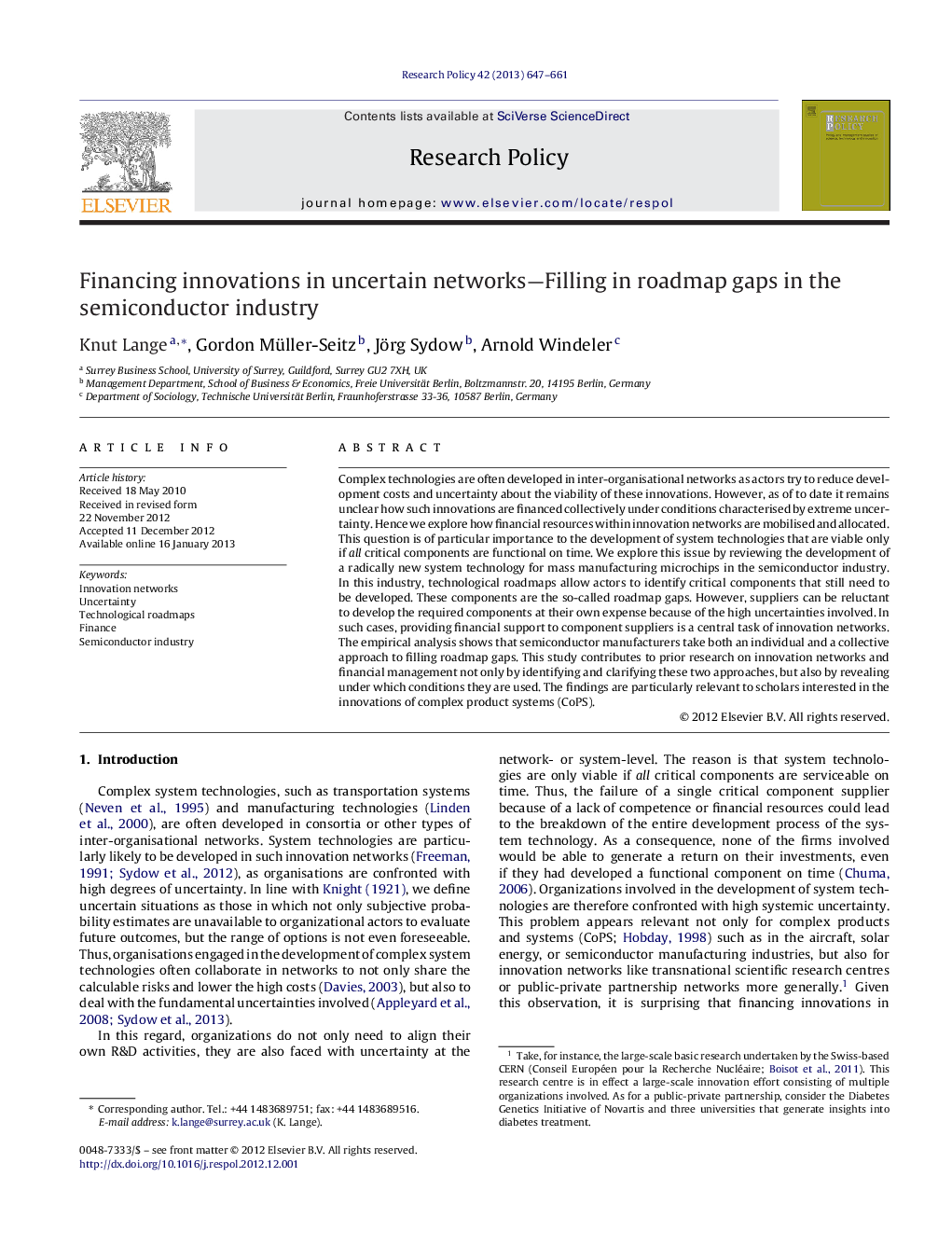| Article ID | Journal | Published Year | Pages | File Type |
|---|---|---|---|---|
| 984921 | Research Policy | 2013 | 15 Pages |
Complex technologies are often developed in inter-organisational networks as actors try to reduce development costs and uncertainty about the viability of these innovations. However, as of to date it remains unclear how such innovations are financed collectively under conditions characterised by extreme uncertainty. Hence we explore how financial resources within innovation networks are mobilised and allocated. This question is of particular importance to the development of system technologies that are viable only if all critical components are functional on time. We explore this issue by reviewing the development of a radically new system technology for mass manufacturing microchips in the semiconductor industry. In this industry, technological roadmaps allow actors to identify critical components that still need to be developed. These components are the so-called roadmap gaps. However, suppliers can be reluctant to develop the required components at their own expense because of the high uncertainties involved. In such cases, providing financial support to component suppliers is a central task of innovation networks. The empirical analysis shows that semiconductor manufacturers take both an individual and a collective approach to filling roadmap gaps. This study contributes to prior research on innovation networks and financial management not only by identifying and clarifying these two approaches, but also by revealing under which conditions they are used. The findings are particularly relevant to scholars interested in the innovations of complex product systems (CoPS).
► System technologies are only viable if all components are functional on time. ► Roadmaps allow firms to coordinate respective activities and, in particular, to identify gaps that could stop the development of system technologies. ► Some component suppliers are unable or unwilling to fill the gaps. ► We analyse how capital within networks is allocated to make suppliers fill these gaps. ► We show that both individual and collective approaches are taken to fill roadmap gaps.
